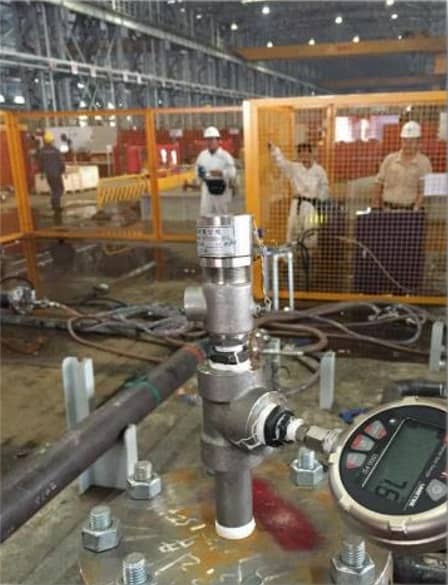Introduction
Hydrostatic testing plays a crucial role in various industries, ensuring the safety and integrity of pressure vessels, pipelines, and other equipment subjected to high pressure. This guide delves into the intricacies of the test, its importance, procedures, and applications.
What is Hydrostatic Testing?

Hydrostatic testing involves filling a vessel or pipeline with liquid, usually water, and pressurizing it to a specified level to detect any leaks or structural weaknesses. This method helps assess the integrity of the vessel or pipeline under pressure conditions similar to its intended use.
Importance of Hydrostatic Testing
The test is significant as it identifies potential hazards before equipment is put into service. Detecting weaknesses or defects prevents catastrophic failures that could lead to injuries or environmental damage.
Hydrostatic Testing Procedures
The process begins with thorough inspection and preparation of the equipment. The vessel or pipeline filled with water to remove air pockets. Pressure gradually applied, usually at 1.5 times the maximum allowable working pressure (MAWP), and maintained for a specified duration as per regulatory standards.
Equipment Used in Hydrostatic Testing
Various instruments and equipment, including pressure gauges, pumps, valves, and safety devices, are utilized in hydrostatic testing. Pressure gauges measure applied pressure accurately, while pumps facilitate filling and pressurization. Safety devices, like relief valves, prevent overpressurization.
Applications
Hydrostatic testing finds applications in industries such as oil and gas, petrochemical, aerospace, and manufacturing. It is commonly used to test boilers, pressure vessels, pipelines, fire extinguishers, and hydraulic systems to ensure compliance with safety standards.
Regulatory Standards and Compliance
Hydrostatic testing adheres to stringent regulatory standards set by organizations like the American Society of Mechanical Engineers (ASME) and Occupational Safety and Health Administration (OSHA). Compliance is crucial to ensure equipment safety and reliability.
Benefits
Benefits extend beyond safety and regulatory compliance, providing assurance of equipment integrity and minimizing costly downtime due to unexpected failures. Early identification of issues allows for timely maintenance and repairs.
Challenges and Considerations
Hydrostatic testing presents challenges such as logistical complexities in the test large-scale equipment and environmental considerations related to water disposal. Trained personnel are essential for conducting tests safely and accurately.
Future Trends
Advancements in technology, like automated testing systems and remote monitoring capabilities, shape the future of the test. Especially, These innovations enhance efficiency, accuracy, and safety while reducing the environmental footprint of testing operations.
Conclusion
The test is vital for ensuring the safety, reliability, and compliance of pressure equipment across industries. Rigorous testing identifies potential hazards, mitigating risks to personnel and the environment. As technology evolves, so will the methodologies and tools, Especially, enhancing testing effectiveness and efficiency resources.
Learn more Successful Arctic module fabrication, steel structure, modular and skid, steelwork, supplier audit, DNV Class, Oil & Gas, welding supervisor, welding quality inspection, CWI CSWIP welding inspector, pump and pipe, stainless steel fabrication and CNAS ISO 17025 9712 NDT NDE practice via below-
https://www.jsc-safe.com/steel-structures-modules-machining/
